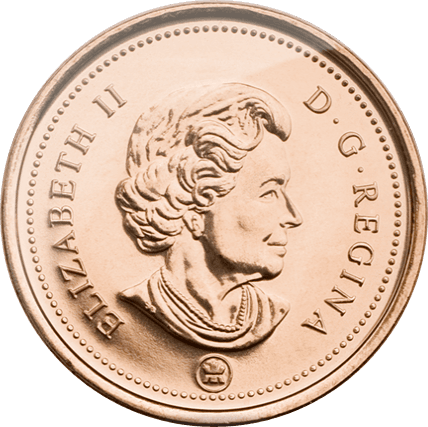As Canada says goodbye to its penny, Americans ponder their own one cent piece
By this fall, the Canadian penny, pictured, will be gone — phased out because it costs more to make than its worth. Could such a decision come to the U.S. next? (Photo by the Royal Canadian Mint.)
Canada’s taken a plunge with its coin currency that’s been discussed off and on in the United States for years.
Starting this fall, our neighbors to the north will no longer mint or distribute Canadian pennies. Instead, cash transactions will be rounded up, or down, based on what the final total is. Electronic transactions, meanwhile, will continue to include the cents. Canada estimates it will save the country C$11 million per year.
In justifying their decision, the Canadian government pointed out that it costs more to make a penny than it’s worth — 1.6 cents per penny. Plus, they say, people often throw the pennies away, leave them in jars at home or sometimes decline to take them at all. Critics say it’ll lead to price increases or inflation. They also say there will be start-up costs to update technology to round whenever the transaction is paid for in cash.
Other economists, though, say it should have no net effect on prices — and any burst of inflation should be limited and temporary.
But the decision in Canada has resurrected the question of the penny in the U.S., where a penny costs 2.4 cents to produce. But any effort to alter U.S. currency has deep and multi-layed issues to contend with
Richard Smith, the creative director at a New York brand engagement firm and president of the Dollar ReDe$ign Project, is trying to change the way all U.S. currency looks.
In his research, he’s found a lot of emotional connection between American consumers and the current U.S. currency.
“It’s symbolic. It represents your country, it represents prosperity, it represents everything you believe about being wealthy,” Smith said.
Smith, though, would like to see fundamental changes to U.S. currency, everything from size to color to even material.
Not to save money, or anything, but because he thinks it might re-invigorate the American economy by capturing consumers’ attention.
“It would create a lot of buzz,” he said. “When I did some research … in Europe, when they started the Euro, there was evidence that the introduction stimulated the value of the Euro, just because of it’s newness.”
When it comes to the penny, though, the U.S. Mint says it takes its cues from Congress, the New York Times reported. So far, Congress has given no indication it wants to get rid of the penny, though it has said the Mint should examine ways to produce the cents more cheaply.
A report on that is due in December.
